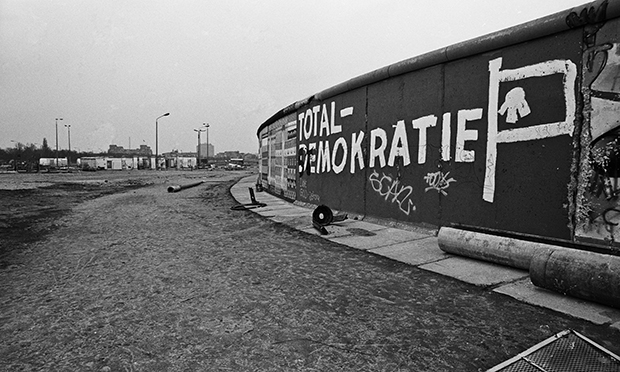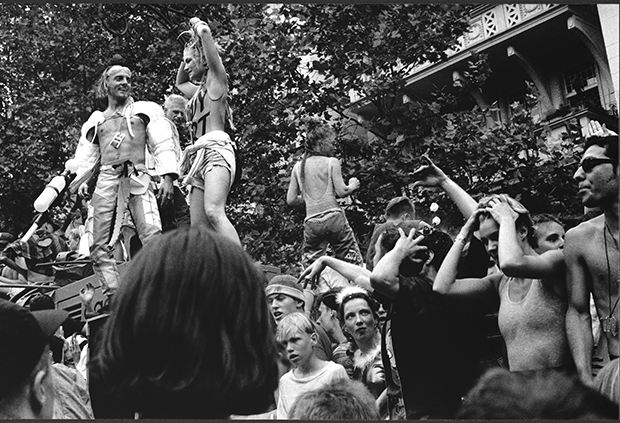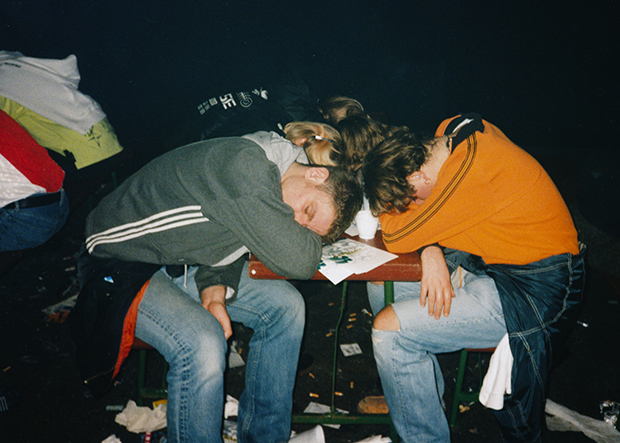
When the Berlin Wall fell, the whole city was reborn. Artists flocked to the capital, creativity flourished, social groups merged and politics shifted radically. Clubs, galleries, squats, studios and workshops quickly sprang up in the many disused buildings. The free space, a sense of jubilation and the prevalence of ecstasy made it just the fertile ground needed for techno and its scene to flourish.
And it is this moment in history that After the Fall depicts. The exhibition features work by photographers, writers and musicians that captures the zeitgeist of Berlin in the early 1990s. Ernesto Leal, the curator, says: “I wanted to bring together all these things that represent Berlin at that time. People were able to experiment with new people, there was new music around, East and West were able to meet. It kicked off the whole regeneration of East Berlin.”
If you’ve ever wondered why Berlin is the epicentre of dance music, this is for you. The exhibition features extracts from Der Klang der Familie (The Sound of Family) an oral and written history from those present in Berlin at that time. Sven von Thülen, one of the authors, says: “Our aim was to let the people who lived the early years of house and techno in Berlin tell the story of the scene’s development rather than us. The many different perspectives and personal – and sometimes contradictory – opinions make for an intimate and close look at what happened back then and why.”

Von Thülen says the exhibition shows a singular period in history. “Post-Wall Berlin is kind of an historical accident. It shows a city as a temporary autonomous zone. An anarchic time filled with a unique sense of freedom and possibility, which was embraced in a very creative and positive way. And with techno as its prime soundtrack.”
Visitors can study arresting black and white photos of the disruption, building sites and sometimes-bizarre fashion of the time. The photographer, Ben de Biel, studied photography in West Germany between 1989 and 1990 and says his studies of reportage inspired him to document what Berlin was like in the early post-wall years. “When I came first in February 1990 I recognised that Berlin after the fall is a unique time in history and the first people who came from West to East as I did were also artists like me. So my pictures deliberately came from this point of view.
“My studies were about photojournalism and documentary. Traditionally this genre is black and white. But especially by taking pictures of people you realise their characters much better in black and white.”
Leal hopes visitors will draw parallels between East London and Berlin. “There seems to be a connection between the two cities,” he says. “In 1992, there was nothing here in East London. People came to warehouse parties and discovered a new place and new people. I could see the connection between club culture and the resurgence of an area.”
After the Fall is at Red Gallery, 1-3 Rivington Street, EC2A 3DT until 18 October.
The opening night, which featured live readings by Sven von Thülen, a documentary screening and music, was recorded and can be listened back to via bloop.

